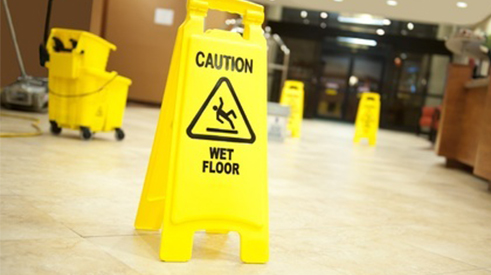Table of Contents
What New York residents must know about “SLIP AND FALL” personal injury cases.
You may not think of including slip and falls incidents within the category of catastrophic accidents, but you might be surprised by the statistics: According to the US Centers for Disease Control and Prevention, falls were the number one cause of traumatic brain injury in the US in 2013, accounting for almost half of all TBI-related hospitalizations, visits to the ER, and fatalities. Many of these falls occurred because of dangerous conditions on property that existed due to negligence. New York law imposes a duty of care on property owners to keep their premises reasonably safe, so victims do have the right to seek compensation if they are injured by a hazardous condition.
However, there are many questions about what it means to maintain safe premises. An experience New York slip and fall attorney can explain in more detail, but an overview may also be useful to understanding notice in premises liability cases.
Notice in a Slip and Fall Accident
Property owners are not expected to absolutely guarantee safety, so how far does the duty of reasonable care extend? Part of the answer comes down to whether there was notice about the hazard, which generally refers to whether or not the owner or occupier of the property was aware of it. If the owner of the premises has some sort of notice, there is a duty to fix the issue or alert others of the danger.
Two types of notice in a slip and fall claim:
- Actual notice: is somewhat straightforward. Property owners certainly know of a hazard if they or their employees created it. Examples might be placing boxes in an aisle or only partially cleaning up a spill. The problem with actual notice is that can be easy to deny. A party who could potentially be liable can contest the circumstances, in which case it is necessary to prove constructive notice.
- Constructive notice: is often at issue in a slip and fall claim because property owners will almost always deny actual notice. Constructive notice is used to get over the adage that “ignorance is bliss,” so it imposes knowledge where an owner should have known about the hazard. Timing is a critical factor to establishing constructive notice because the owner must have a chance to discover the dangerous condition and do something about it. It may exist where there is a significant build up of ice, grass growing through a faulty crack in the pavement, or water stains around a slippery floor. The duty to exercise reasonable care includes the responsibility to inspect the premises, so an owner should know about a hazard through regular assessments of the property.
Consult with a Knowledgeable New York Slip and Fall Lawyer About Your Claim
If you were hurt in a slip and fall accident or any incident involving a dangerous condition on property, please contact Monarch Law Group to set up a free consultation at our Wall Street or Long Island, NY offices. We can evaluate your circumstances and tell you more about strategies to recover compensation for your injuries.

